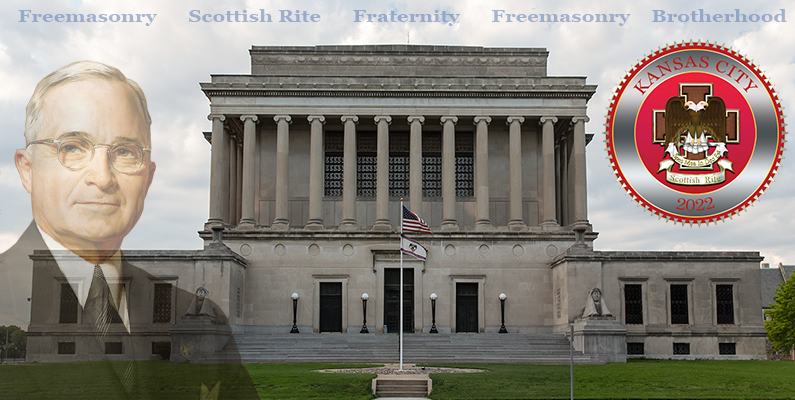
Scottish Rite History

George Edward Kessler, 32°
(Jul 17, 1862-Mar 19, 1923)
Born: Frankenhausen, Germany
Rural Lodge #316, Kansas City, Missouri
1903 - 32° Consistory of Western Missouri, Kansas City
Occupation: Famed Landscape Architect, Founder of the American Institute of Planners, charter member of the United States Commission of Fine Arts.
Recommended: FW Thaxter, CHV Lewis
Interred: Bellefontaine Cemetery,
Saint Louis, MO
Brother George Edward Kessler, born July 16, 1862, in Frankenhausen, Germany was a German American pioneer city planner and landscape architect.
In 1865 the family emigrated to the United States eventually settling in Dallas, Texas, where George's father and uncle invested in a cotton plantation. George's father died in 1878 when George was 16. His mother decided that being a landscape architecture would combine the right degree of creativity and practicality to suit George's temperament. The family moved back to Germany, where George received formal training, accepting a two-year apprenticeship at the private landscape gardening school at the Grand Ducal Gardens in Weimar, Germany, where he studied botany, forestry, and design under Hofgartner Armin Sckell and Garteninspector Julius Hartwig and then for several months with
Haage and Schmidt, a major German plant nursery in Erfurt. He received further training in Charlottenburg and Potsdam that included a brief study at Gaertner Lehr Anstalt, the school of garden design; technical engineering study at Gartner-Lehranstalt; study with Hofgartner Theodore Neitner at the Neue Garten and study at the Polytechnicum, the premier horticultural library in Germany.
George completed a course in civil engineering at the University of Jena, after which he toured central and western Europe and southern England for one year with a tutor in order to study civic design in major cities from Paris to Moscow returning to New York in October 1881.
In 1882, he entreated and accepted work from H.H. Hunniwell taking charge of a public picnic and pleasure park of the Kansas City, Fort Scott, and Gulf Railway Company in Merriam Park, Johnson County, Kansas, ten miles southwest of Kansas City, Missouri. Kessler, along with his mother and sister, moved to a house on John Mastin's Johnson County farm where he also served as caretaker of the farm property.
In addition to his work at Merriam Park, Kessler prepared landscape plans and supervised the maintenance of many of the railroad's stations in Kansas and Missouri. He also managed the company's two experimental tree farms totaling 1,500 acres near Farlington, Kansas.
Kessler opened an office in Kansas City and went looking for more work. In 1887, he was commissioned to bring order to a hollow that formed the at the center of Kansas City's fashionable Hyde Park neighborhood. Kessler landscaped the hollow and then encircled it with a boulevard to prevent residents from turning it into part of their backyards. The layout spurred sales of stately homes along the boulevard.
The success of the project drew the attention of The Kansas City Star publisher, William Rockhill Nelson, who would champion the City Beautiful Movement.
On May 31, 1890, Kessler applied to become the landscape architect for the city's newly created Park Board. Following court challenges on whether the city could issue bonds to fund parks, Kansas City finally got the approvals to create a park board on March 5, 1892, thanks to the efforts of August Meyer. Kessler had earlier designed the grounds of Meyer's house in what is today's Kansas City Art Institute. Kansas City's model for park and boulevard systems would be used by numerous cities. Kessler was hired as the board's engineer.
Brother Kessler locally helped design the Boulevard system of Kansas City including the Paseo which was named after the famed "Paseo de la Reforma", one of Mexico City's most fashionable boulevards, Longview Farm for Robert A. Long. Kessler had earlier designed the grounds of August Meyer's house in what is today's Kansas City Art Institute. Kansas City's model for park and boulevard systems would be used by numerous cities. Kessler was hired as the board's engineer.
On May 31, 1890, Kessler applied to become the landscape architect for the city's newly created Park Board. Following court challenges on whether the city could issue bonds to fund parks, Kansas City finally got the approvals to create a park board on March 5, 1892, thanks to the efforts of August Meyer. Kessler had earlier designed the grounds of Meyer's house in what is today's Kansas City Art Institute. Kansas City's model for park and boulevard systems would be used by numerous cities. Kessler was hired as the board's engineer.
Kessler later worked with Meyer to lay out the city's street grid including a parks and boulevard system. The initial 1893 plan called for 9.85 miles of boulevards and 323.45 acres of parks.
On May 14, 1900 Kessler married Ida Grant Field of Kansas City, Missouri. They had one son, George Edward Kessler, Jr.
George Kessler was again hired by Indianapolis in 1920. He was supervising the construction of a new major east/west belt road on March 20, 1923, when he died. He was survived by his wife and son and was buried in Bellefontaine Cemetery in St. Louis, Missouri.
The Indianapolis road he was supervising was named Kessler Boulevard in his honor. In Dallas, the Kessler Park neighborhood is named for him. Longview, Washington named Kessler Boulevard and Kessler Elementary School in his honor.
Kessler was a founder of the American Institute of Planners. He was also one of the original members of the United States Commission of Fine Arts.
Over the course of his forty-one year career, George E. Kessler completed over 200 projects and prepared plans for 26 communities, 26 park and boulevard systems, 49 parks, 46 estates and residences, and 26 schools. His projects can be found in 23 states, 100 cities, in places as far flung as Kansas City, Missouri; St Louis, Shanghai; New York and Mexico City.
"Planning", wrote Kessler, "should be comprehensive. Even though a grand urban design could only be realized in bits and pieces, and over a long period of years, still we should always know where we are going. Each bit and piece should be understandable by reference to the great plan of which it is a part. Planning must also be relevant to the particular city: its geography, its economic character, all its local peculiarities. We must," he insisted, "deal with it in its application to the entire city. The object is to make cities decent places for masses of people to live in. Cities grow mostly by accident in response to trends in the real estate market. Very little thought is given to their qualitative characters. But there comes a time when development must be subject to control, when further growth must be planned such that urbanization will no longer proceed at the expense of devastating nature.

